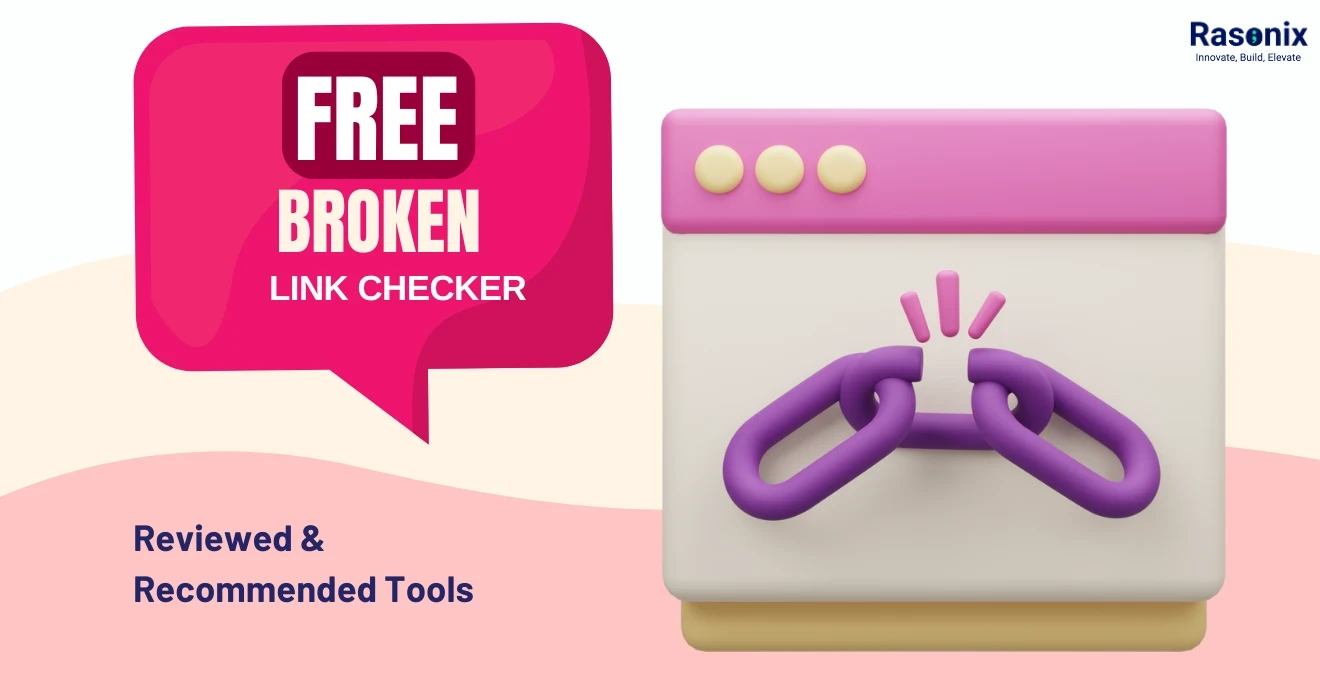I remember the first time I attempted to style my website. I typed in and hoped it would produce magic. Nothing happened. Trying to link HTML to CSS is easy, but only if you know what you're doing!
If you're a beginner web developer and are thinking about how to link HTML to CSS, then you're in the right place. In this overview, I will take you through everything, what CSS and HTML are, the different ways to add CSS styles, and last but not least, how to link HTML to CSS step-by-step.
What Is CSS and Why Do We Link It to HTML?
Before getting into how to link HTML with CSS, we should first clarify what CSS is.
- HTML (HyperText Markup Language) provides the structure of your web page, headings, paragraphs, links, and so on.
- CSS (Cascading Style Sheets) is what gives that structure life.; colour, spacing, layout, animation, and more,
You can think of HTML as the skeleton, while CSS is the clothes you wear. The structure is there but it doesn't look appealing. Linking CSS to HTML helps you to separate of content and design, which makes your code more readable, maintainable and scalable.
Step-by-Step: How to Link HTML to CSS
Let’s break it down step-by-step using the most effective and professional method: External CSS.
Step 1: Create Your HTML File
|
<!DOCTYPE html>
<html>
<head>
<title>My First Web Page</title>
</head>
<body>
<h1>Hello World</h1>
<p>This is a simple web page.</p>
</body>
</html>
|
Step 2: Create Your CSS File
Create a separate file named style.css in the same directory as your HTML file (or in a css/ folder).
|
/* style.css */
body {
background-color: #f0f0f0;
font-family: Arial, sans-serif;
}
h1 {
color: navy;
text-align: center;
}
p {
font-size: 18px;
color: #333;
}
|
Step 3: Link the CSS File to HTML
Now, open your HTML file and link the CSS using the <link> tag in the <head> section:
|
<head>
<title>My First Web Page</title>
<link rel="stylesheet" href="style.css">
</head>
|
That’s it! Save both files and open the HTML file in your browser—you’ll see the styles applied.
Bonus: Alternate Ways to Apply CSS
|
Method
|
Best For
|
Maintains Clean Code
|
Reusability
|
Ease of Maintenance
|
|
Inline CSS
|
Quick fixes or individual elements
|
No
|
No
|
Poor
|
|
Internal CSS
|
One-page websites
|
Moderate
|
No
|
Average
|
|
External CSS
|
Multi-page or professional sites
|
Yes
|
Yes
|
Excellent
|
1. Inline CSS
Add the style directly to the HTML element.
|
<h1 style="color: red;">Hello Inline!</h1>
|
- Good for quick testing
- Not scalable or clean
2. Internal CSS
Add a <style> block inside the HTML <head>.
|
<head>
<style>
h1 {
color: green;
}
</style>
</head>
|
- Good for single-page sites
- Not reusable for multiple pages
3. External CSS (Recommended)
Keep styles in a separate .css file and link it using the <link> tag.
|
<link rel="stylesheet" href="style.css">
|
- Best practice for clean, reusable code
- Great for teamwork and scalability
Real-World Tips from My Experience
When I first started, I made a lot of beginner mistakes. Here are a few hard-earned tips to save you time and frustration:
1. Use Relative File Paths:
If your CSS file is in a folder called css/, your href should be:
|
<link rel="stylesheet" href="css/style.css">
|
2. Clear Your Cache:
Sometimes, browsers cache your CSS. If changes don’t appear, try:
Hard refreshing (Ctrl + F5)
Clearing cache in browser settings
3. Folder Structure Matters:
Organize your project like this:
|
/project
├─ index.html
├─ css/
│ └─ style.css
└─ js/
└─ script.js
|
4. Use Developer Tools
Right-click → Inspect (or press F12) in your browser to:
- Check if the CSS file is loaded
- Debug styles
- Test quick changes
Enhancing Your HTML + CSS Setup
Use Visual Studio Code (VS Code)
- It’s free and has amazing features:
- Live Server plugin for real-time preview
- Auto-complete for CSS and HTML
- Syntax highlighting
Add Google Fonts
Use Google Fonts to enhance your HTML and CSS setup.
|
<link href="https://fonts.googleapis.com/css2?family=Roboto&display=swap" rel="stylesheet">
<style>
body {
font-family: 'Roboto', sans-serif;
}
</style>
|
Use CSS Frameworks (Bootstrap)
If you want to speed up development:
|
<link rel="stylesheet" href="https://cdn.jsdelivr.net/npm/bootstrap@5.3.0/dist/css/bootstrap.min.css">
|
Then use built-in classes:
|
<h1 class="text-primary text-center">Hello Bootstrap</h1>
|
Link HTML to CSS | Common Issues & Fix
|
Problem
|
Solution
|
|
CSS not applying
|
Check file path and file extension (.css)
|
|
Wrong directory
|
Ensure the CSS file is in the correct folder
|
|
The browser shows old styles
|
Clear the cache or do a hard refresh
|
|
Typo in rel="stylesheet"
|
Make sure there are no typos in the link tag
|
|
Forgetting to save the file
|
Save the file
|
Bonus: How to Link JavaScript to HTML
Since you’re learning HTML and CSS, why stop there? You can also link JavaScript:
|
<script src="script.js"></script>
|
Just place it before the closing </body> tag to improve load performance.
Conclusion
Mastering how to link HTML to CSS is one of the most fundamental skills in web development. Whether you’re creating your first portfolio or a business site, understanding this link gives you the creative freedom to design beautiful, responsive, and user-friendly websites.
Key Takeaways:
- Use external CSS for clean, scalable code
- Keep your file structure organized
- Leverage tools like VS Code, Google Fonts, and Bootstrap
- Don’t be afraid to break things and learn by doing!
The best way to learn is by building. Start simple, then grow complex. Your CSS journey starts with one link tag.
Ready to Start Your Web Dev Journey?
Now that you know how to link HTML to CSS, go ahead and build something or anything. Maybe it’s just a “Hello World” or a fun personal homepage. Whatever it is, this step matters. Every developer starts somewhere, and this is yours.
If you're ready to take things further or want your first real website built by pros, check out Rasonix. We create fast, mobile-friendly, SEO-ready websites for businesses, creators, and anyone looking to make a mark online. Need a blog, portfolio, or eCommerce site? We've got you. And here's something special, leave us a review on Clutch, and we’ll build your website with special offers. Let’s get started.
Frequently Asked Questions (FAQs)
How do I link multiple CSS files to HTML?
Use multiple <link> tags:
<link rel="stylesheet" href="reset.css">
<link rel="stylesheet" href="main.css">
Can I use both internal and external CSS?
Yes, but avoid mixing them unless necessary. External CSS is preferred for organization.
What if my CSS file is not being read?
Check:
- Correct file name and path
- Browser cache
- Console for errors (F12 → Console tab)
What is the best way to link CSS for SEO and performance?
Place the <link> tag in the <head> for SEO best practices. Minify CSS for faster loading.


















 Subscribe Now
Subscribe Now